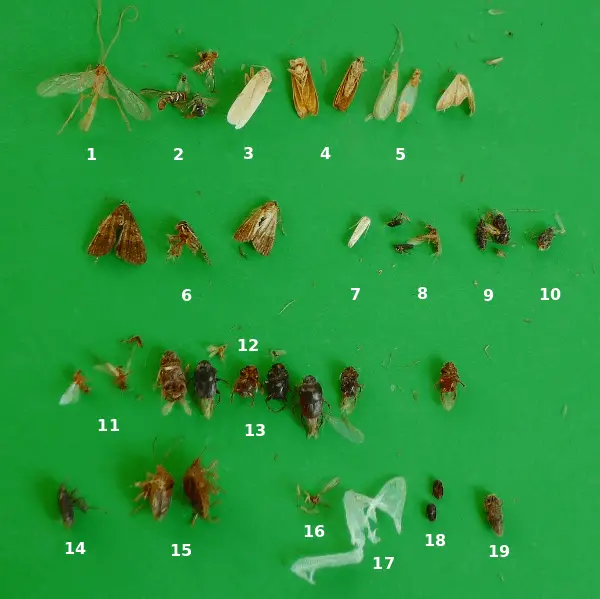This article demonstrates how deviating from a dull routine can lead one towards discovery. Find out how a little shift in one’s behavior can produce unusual information.
One night, I noticed that the ceiling lamp over our dining table got dimmer than usual. When I looked up, I saw that the central part of the lamp had a dark shade of dirt that blocked the light from going through the glass cover. Ah, the pesky insects once again got trapped on the concave part of the round plate of glass.
I got an aluminum ladder and carefully removed the rounded nut of one of the three bolts that pinned the glass covering metal holder. When I held down the glass, the following mass of winged insects attracted by the light at night greeted me.

Instinctively, I walked towards the door to get rid of the “dirt” and clean the glass covering. On second thought, however, I paused and contemplated if I can make out something out of this mass of apparently insignificant stuff.
I went out the other door towards the porch and laid the chaotic array of broken wings. As I did so, distinct shapes and sizes of insects came into focus as I ran my fingers through it.
The picture below shows the 18 species of winged insects that I discovered from the messy collection.

The pile of material consisted of wasps, moths, winged termites and ants, moth, beetles, flies, plant bugs, among others. All of the identifiable stuff are insects except no. 17 which is a shed lizard skin. This indicates that lizards fed on most of the insects attracted by the light as they get trapped inside the glass cover.
Reflections from the Discovery
As we always try to find meaning to what we observe, I posed a question in my mind on the relevance of the things I’ve found. Are the things I’ve found of any value at all?
While this discovery may not be a ground breaking one, I believe that I have supplied information found nowhere else in print or online. This information may be of special significance to an entomologist.
From what I could make out from this discovery, the collection of insects in the glass covering of the ceiling lamp represents the diversity of living organisms next to our place lying next to forested lots. These insects live and die in the often inundated “bangkal” (Nauclea orientalis) forest once marked by termite mounds. These insects compose the forest ecosystem as intermediaries of nutrient cycling. They are agents that transport nutrients all over the place. Without insects, nutrients remain in the soil and will not be made available in the chain of predator and prey interactions. And these interactions influence human life (see the mango weevil story).
How significant are these insects to me? Well, they took my attention that made me climb a ladder, took pictures, and clean the glass cover of the ceiling lamp when I should have been out somewhere. It has sparked a chain of events that changed my usual routine and made online presence through this musing. And I gained enjoyment from my writing activity.
This is an exercise of being unconventional in one’s thinking. I broke a simple routine of just cleaning the “dirt” from the ceiling lamp. Being unconventional leads to discovery.
© 2014 September 21 P. A. Regoniel



What’s the official name for #18
I’ve seen number 18 crawling around my room for about 3 weeks now. I don’t know what they are so I can’t research them. Do you know?
Did you ever find out what they are?
Hello Christine, I didn’t think of doing that. That’s a question that made me think I’d do a little more research to find out. I was also hoping an entomologist would come across this post and offer some light on the species.